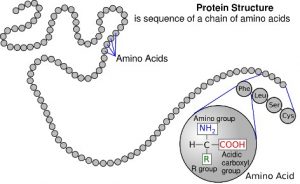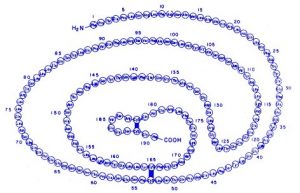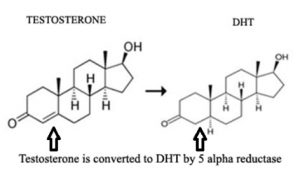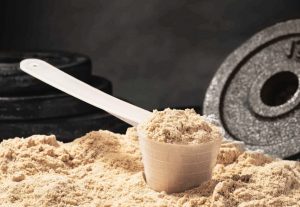Before addressing the discussion about biological value and sources of protein, protein supplementation for athletes, for adults, for the elderly and in the diet, a brief general introduction to proteins is necessary, to describe their structure, their thermogenic power, generally little mentioned, but the highest ever, and what happens in the body when they are taken.
In this way, even the neophyte, who is taking his first steps in the world of nutrition, integration, and fitness, will have the basis to fully understand the topic that is about to be treated.
What are proteins and their structure
Proteins are organic macromolecules, or biological if you prefer, formed by hundreds or thousands of molecules called amino acids, amino acids are considerably smaller than proteins, and represent the basic unit.
How are amino acids joined together, and how is it possible starting from a single amino acid to reach proteins?
Each amino acid binds to another through a bond called peptide bond, 2 amino acids linked together give rise to a molecule called di-peptide, which by binding to another amino acid gives rise to a molecule called tri-peptide, and so on. this step until chain structures called amino acid chains are formed.
From the union of several amino acid chains, proteins are obtained.
Fig. 1 - Proteins are formed by amino acid chains, amino acids are so called because in their structure they have both an amino group and an acid group (of carboxylic acid).
The structure of proteins can be illustrated very simply using a comparison that has become famous: 1 amino acid = 1 brick; 1 row of bricks = 1 amino acid chain; the lime that holds the bricks together = the peptide bond that holds the amino acids together; the complete wall = a protein
Thermogenic power of proteins
Proteins represent one of the 3 macronutrients of human nutrition, the other 2 are carbohydrates and fats, but unlike the latter, proteins have great thermogenic power.
By thermogenic power of a food we mean the caloric expenditure necessary to be able to assimilate the calories of that particular food.
The thermogenic power of proteins is as much as 25%, which is the highest ever. This means that if we introduce 100 calories from proteins, our body will spend 25 to assimilate them, and we will assimilate 75.
Having said that, we do not "take advantage" of this, because an excess of calories always leads to weight gain, regardless of whether the excess calories come from proteins, fats, or carbohydrates.
What happens in the body when we eat protein
Every time we take proteins, our body is induced to perform protein synthesis, but what exactly does this mean?
First of all it must be said that our organism does not think like us, we talk about proteins, but it understands amino acids, proteins as we introduce them does not know what to do with them, in order to use them it must reduce them to their basic structure, that is to say in the amino acids that make up, because with those amino acids it will build our proteins.
So once the proteins have been introduced, both from the traditional protein diet and from the integration, they begin to be digested, which for our body means reducing them into ever smaller and more elementary molecules (the amino acids that compose them), with the which will build our muscles. Our body will not only use amino acids to build muscle mass, it will also build most of our hormones, and all of our enzymes, among other things.
This is because many hormones are proteins, and these types of hormones fall into a very specific category called peptide or protein hormones, and all the enzymes present in the human body are always proteins.
Since it is essential for an athlete to have a good hormonal profile, and that all his enzymes work properly, here comes the concept of how important proteins are for athletes, regardless of the type of sport practiced.
Proteins: also hormones
A much-celebrated hormone in sports circles is GH, where GH stands for Growth Hormone, which translated into Italian means growth hormone, and they could not give it a more appropriate name, since its task is precisely to provide for the growth of the human organism.
GH works for both hypertrophy and hyperplasia on almost all of our tissues, obviously including muscle tissue.
Just to be clear, the term hypertrophy means the increase in the volume of existing fibers, and the term hyperplasia means the birth of new fibers. This hormone is the most famous representative of the category of protein or peptide hormones, structurally GH is an amino acid chain formed by 191 amino acids placed in sequence with each other.
Fig. 2 - A graphic representation of GH (growth hormone), which is nothing more than an amino acid chain composed of 191 amino acids.
Let me return to the definition of GH to make a necessary clarification: The sequence of 191 amino acids that form the structure of GH is not a random sequence, but is a very precise and defined sequence.
If the same 191 amino acids were arranged in another sequence, GH would not be obtained.
To try to be as clear as possible I will help by comparing amino acids to the letters of the alphabet.
Suppose we have the letters A available; S; R; And, (and let's imagine that they are amino acids), depending on how we arrange them we can get the word SERA, but also RASE, or RESA.
With the same letters, but by varying the arrangement, different words are obtained, the same thing happens with amino acids.
Proteins: also enzymes
All of our enzymes are proteins, and enzymes are essential for many of the biochemical processes within our body to be possible, including a process that causes strength gain, and which would not be possible without the 5 alpha reductase enzyme. .
The 5 alpha reductase enzyme converts testosterone into dihydrotestosterone (DHT), increasing the athlete's strength.
This enzyme makes simple the double bond that exists between the carbon atom 4 and the carbon atom 5 of testosterone, and that's it, the conversion into dihydrotestosterone has taken place.
Why is there an increase in strength?
Dihydrotestosterone has a greater affinity for androgen receptors than the testosterone from which it derives, and it is precisely this that leads to the increase in strength.
Among other things, creatine is also able to carry out the conversion just mentioned, and the rapidly absorbed whey proteins, such as hydrolysates and isolates, facilitate the access of creatine into muscle cells, thus proving to be very useful also for purposes of a correct absorption of creatine.
Fig. 3 - Like all enzymes, 5 alpha reductase is also a protein, and is able to increase the strength of the athlete.
Protein foods: Some necessary clarifications
There are foods that have a good protein content, (to be traditional foods).
Let's say that if on 100 grams of food the protein value is around 30 grams we can say that it has a very respectable protein percentage, but be careful, you have to see what the remaining 70% is made of, i.e. the remaining 70 grams.
Just to give an example, a typical food of Calabria, the Calabrian sausage has 36% of proteins, but it is also very rich in saturated fats, just to say those that contribute to raising the level of cholesterol, and I am not referring to good cholesterol. (HDL), but to what is commonly called bad (LDL), the small fraction of which oxidizes and settles, forming arteriosclerotic plaques.
So protein doesn't necessarily mean healthy.
In some cases, a marketer who knows no shame tries to pass something off as protein that is not.
Very often, for example, we hear about oatmeal as a protein food, but at best, an oatmeal with excellent nutritional values can get to have a 13% of protein, and the rest?
Basically the rest is represented by low glycemic index carbohydrates and fiber, which keep carbohydrates at bay by slowing their absorption, conceptually oatmeal is a slow-release "healthy energy package", it has a good protein percentage for be a cereal derivative, but not with a lot of protein at all. Here in this case we are not talking about a protein food, but it is certainly healthy and functional to our well-being.
Taking into consideration the queen of protein meats, chicken, the protein quantity always refers to the breast, but the thigh contains much less.
The dried cod, commonly called dried cod, with its 80.1 grams of protein per 100 grams of product is certainly an excellent protein food.
| Product | Energy (Kj) | Energy (Kcal) | Proteins (%) | Fat (%) | Saturated fat (%) | Carbohydrates (%) | Sugars (%) | Fiber (%) |
| Soy steak | 1377 | 329 | 47 | 1,2 | 0,14 | 20,9 | 9,9 | 17,5 |
| Chicken egg, whole, in powder | 2402 | 574 | 47 | 41,2 | 12,96 | 4,1 | 4,1 | 0 |
| Soybean seeds | 1665 | 398 | 36,9 | 18,1 | 2,54 | 23,3 | 11 | 11,9 |
| Cow's milk, skimmed powder | 1469 | 351 | 33,1 | 0,9 | 0,63 | 56,2 | 56,2 | 0 |
| Cow's milk, partially skimmed, in powder | 1749 | 418 | 28,8 | 12,7 | 6,28 | 50,2 | 50,2 | 0 |
| Cow's milk, whole, in powder | 2025 | 484 | 25,7 | 24,9 | 15,45 | 42 | 42 | 0 |
| Milk cream | 1109 | 265 | 20,6 | 20,3 | 12,6 | 0 | 0 | 0 |
| Gorgonzola | 1502 | 359 | 19,4 | 31,2 | 15,08 | 0,1 | 0,1 | 0 |
| Chicken egg, yolk | 1485 | 355 | 16,3 | 31,9 | 9,85 | 0,7 | 0,7 | 0 |
| Low-fat cheese | 1000 | 239 | 14,7 | 17,3 | 10,34 | 6,5 | 6,5 | 0 |
| Gorgonzola and mascarpone cheese | 1699 | 406 | 13,5 | 39,1 | 22,13 | 0,1 | 0,1 | 0 |
| Whole wheat semolina pasta | 1356 | 324 | 13,4 | 2,5 | 0,58 | 66,2 | 3,7 | 11,5 |
| Egg pasta, dry | 1540 | 368 | 13 | 2,4 | 0,67 | 78,6 | 2 | 3,2 |
| Chicken egg, whole | 653 | 156 | 13 | 11,1 | 3,31 | 1 | 1 | 0 |
| Fresh egg pasta | 1293 | 309 | 11,8 | 2,8 | 0,79 | 63,2 | 1,7 | 2,9 |
| Low-fat cottage cheese | 427 | 102 | 11,7 | 5,3 | 3,17 | 2,6 | 2,6 | 0 |
| Chicken egg, egg white | 197 | 47 | 10,9 | 0 | 0 | 0,8 | 0,8 | 0 |
| Semolina pasta | 1490 | 356 | 10,8 | 0,3 | 0,07 | 82,8 | 2,7 | 2,6 |
| Cow's milk, condensed, with sugar | 1368 | 327 | 8,7 | 9 | 5,59 | 56,5 | 56,5 | 0 |
| Oat flakes | 1653 | 395 | 8 | 7,5 | 1,32 | 73,5 | 0 | 8,3 |
| Almond paste | 1954 | 467 | 8 | 25,8 | 2,14 | 54,3 | 54,3 | 7,2 |
| Shortcrust pastry | 2008 | 480 | 7,7 | 24,3 | 10,25 | 61,3 | 25,8 | 1,7 |
| Puff pastry | 2343 | 560 | 5,6 | 40,6 | 15,77 | 45,9 | 0,9 | 1,6 |
| Cow's milk, skimmed uht | 151 | 36 | 3,7 | 0,2 | 0,14 | 5,2 | 5,2 | 0 |
| Cow's milk, partially skimmed uht | 205 | 49 | 3,6 | 1,8 | 0,89 | 4,9 | 4,9 | 0 |
| Cow's milk, skimmed | 151 | 36 | 3,6 | 0,2 | 0,14 | 5,3 | 5,3 | 0 |
| Cow's milk, partially skimmed | 205 | 49 | 3,5 | 1,8 | 0,89 | 5 | 5 | 0 |
| Cow's milk, whole uht | 255 | 61 | 3,2 | 3,4 | 2,11 | 4,7 | 4,7 | 0 |
| Cow's milk, whole | 255 | 61 | 3,1 | 3,4 | 2,11 | 4,8 | 4,8 | 0 |
| Cow's milk, whole with vitamins | 243 | 58 | 3,1 | 3 | 1,86 | 5 | 5 | 0 |
| Cow's milk, partially skimmed with vitamins | 188 | 45 | 3,1 | 1,5 | 0,74 | 5 | 5 | 0 |
| Olive paste | 1385 | 331 | 1,4 | 34,3 | 5,02 | 4,5 | 4,5 | 2,2 |
Tab. 1 - Nutritional values of some foods in descending order by protein percentage content
Read also:
Proteins: biological value and protein sources







